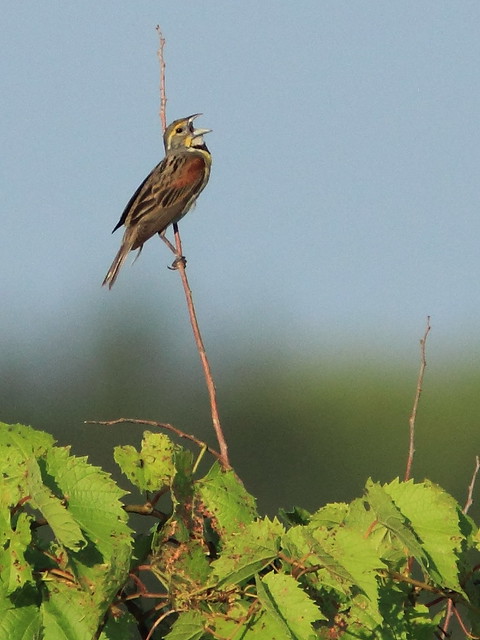Posted by: Ken @ 4:54 am
On June 17, a few days before we returned to Florida, Bob Andrini, President of the Kane County Audubon, led four of us on a “ramble” through Prairie Green Wetlands, a publicly-owned preserve in Geneva, Illinois (see Map). We got out very early because the temperature was expected to rise to 100 (F) by midday. Illinois was in the throes of a record hot and dry spell. For nearly the whole month of July, it was often ten degrees hotter than back home in south Florida. The corn crop was in danger of complete failure.
Tenant farmers still plant 300 of the 580 acre preserve in corn and soybean. Soybean is the crop in the foreground as we entered from the east. While soybean is somewhat drought tolerant, many of the corn stalks have not even created silk, the essential step before pollination and setting of kernels. The growth of the corn stalks is stunted and the leaves are curled because of the lack of water.
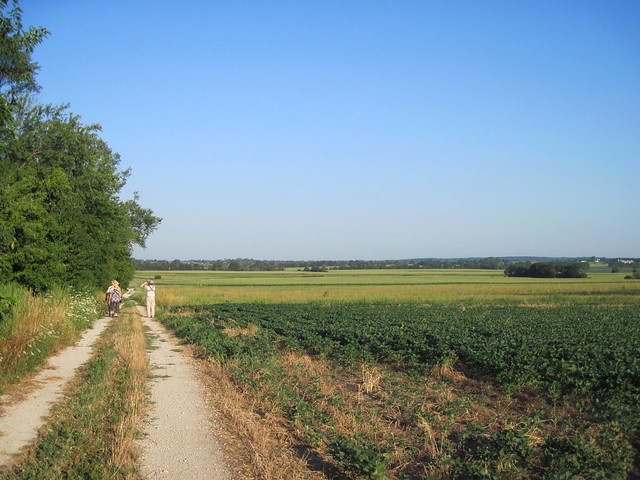
To the south (our left) is a fence line hedgerow, and beyond that part of the preserve’s 100 acres of restored tall grass prairie. It produced several bird species, including House Finches, Song and Savannah Sparrows, and many Red-winged Blackbirds. We heard and caught fleeting glimpses of two Sedge Wrens.
Dickcissels sang all around us. The yellow on this one’s breast was unusually clear and extensive.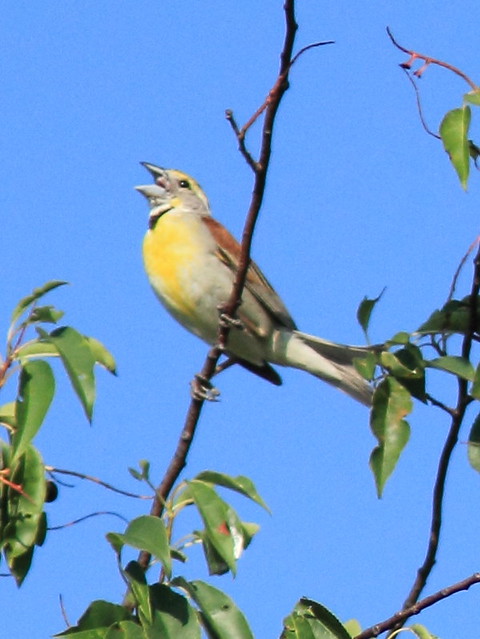
Indigo Buntings were in full song, but showed signs that they were molting into their drab fall plumage.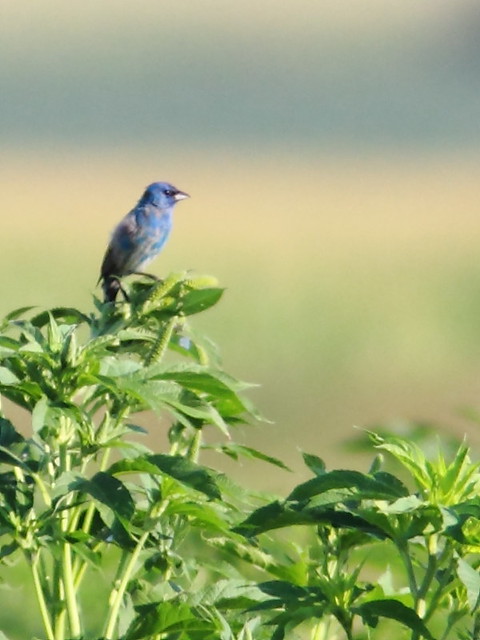
We walked westward past the crop fields into an 80 acre wetland area that is normally a moist grassland, but the soil was dry and brick-hard underfoot.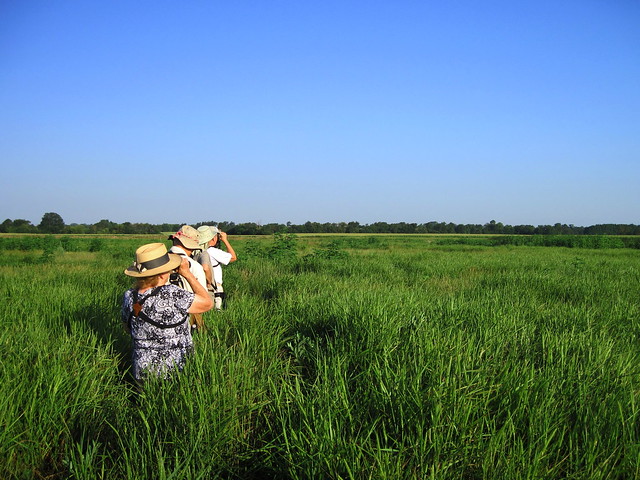
In past years a pair of Yellow-headed Blackbirds had nested in the sedges and cattails that surrounded a small lake at the far western end of the preserve. The drought has caused the lake to shrink to not much more than a puddle of water. The former lake bed is shriveled and dry. The Yellow-headed Blackbirds did not return this year.
As we approached what was left of the pond, we heard the sound of water splashing and expected to see a flock of ducks fly up from the surface. Instead, we realized that the noise came from hundreds or even thousands of small frogs attempting to escape from us. The pond looked as if it were full of rocks, until the little frogs started jumping.
The amphibians were clearly in great danger from dehydration and were easy prey for herons and other predators.
Some, like this one, had not fully emerged from the tadpole stage.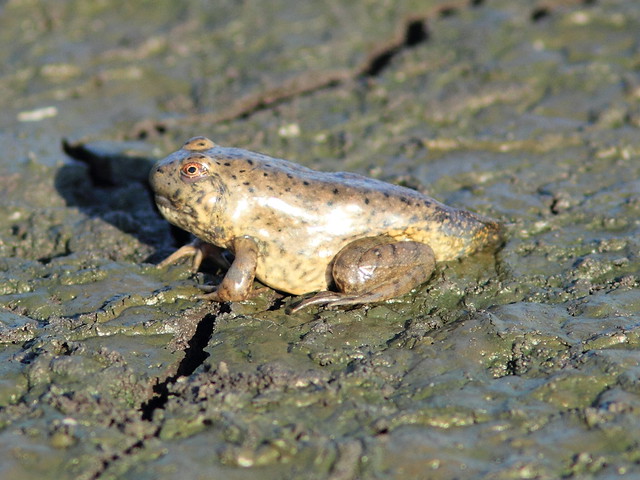
Others seemed mired in the sticky mud. Note that there is something that looks like a cluster of small white elongated ovoid objects on its abdomen near the fold of its left thigh. They resemble the cocoons of parasitic wasps such as those that lay their eggs on caterpillars such as these, depicted on a tomato hornworm. I could find no reference to such a phenomenon, so I am possibly misinterpreting the image. Click to enlarge to full size if you wish to examine the cluster more closely. 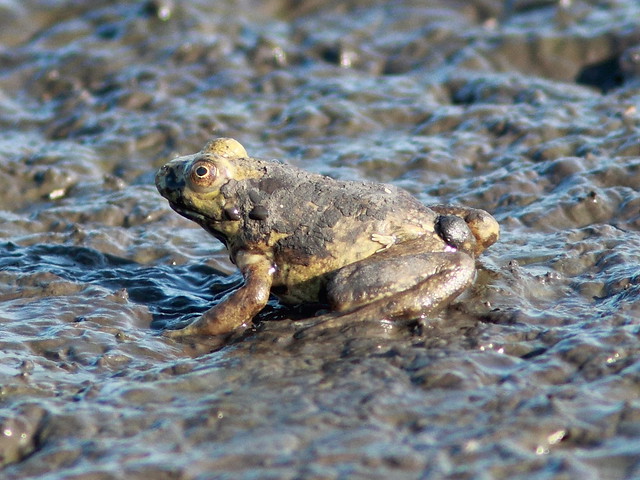
Around the margins of the pond, several Semipalmated and Least Sandpipers foraged. Leg color helps distinguish the two sandpiper species. The Least Sandpiper, on the left, has yellow legs while the Semipalmated species has black (but is this actually a Least Sandpiper with muddy legs?). See this informative article by Cameron Cox, in which he points out that the Least Sandpiper tends to point its bill more nearly straight down while foraging as opposed to the Semipalmated Sandpiper, which extends its neck further away from its body. This photo does illustrate a difference between the two species, though it captures only an instant in time.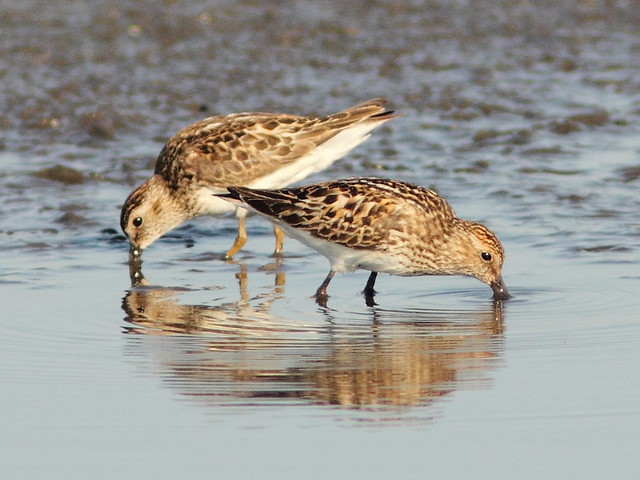
This Semipalmated Sandpiper’s grayish back contrasts with the warm brown of the Least Sandpiper. Mud on its bill makes it look fat and bulbous. This appearance has accounted for some false reports of very rare Spoon-billed Sandpipers.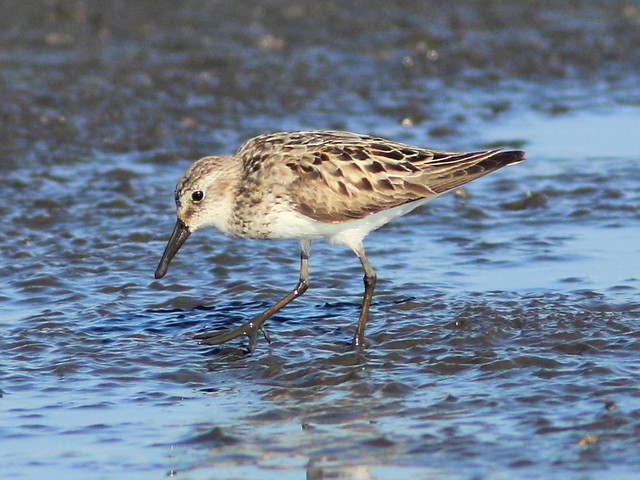
Least Sandpipers tend to forage around the edge, though they may wade in up to their bellies. This one checks out a frog…
…as a Semipalmated Sandpiper walks by. Its bill, clean in this case, appears heavier and straighter than the dainty droopy one of the Least Sandpiper.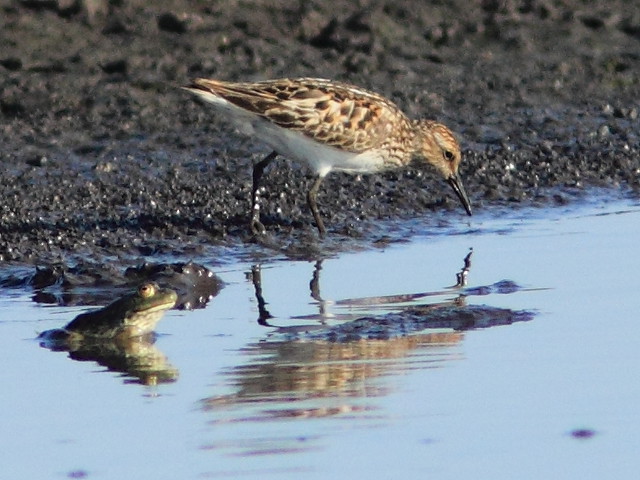
One sandpiper stood out as appearing a bit larger than the Least and Semipalmated Sandpipers. It was possibly longer-winged, but the tips of the wings did not extend beyond the tail tip as would be expected in a Baird’s Sandpiper. It had a rather prominent dark area on its neck and upper chest. Might it be a Pectoral Sandpiper, or since it is seen between two smaller Least Sandpipers, just a larger-appearing Semipalmated? We could not concur on its identity.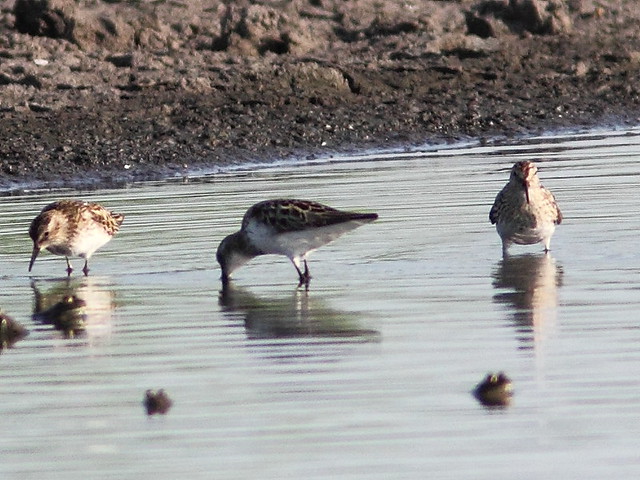
Here is a closer look at the (so far) unidentified sandpiper.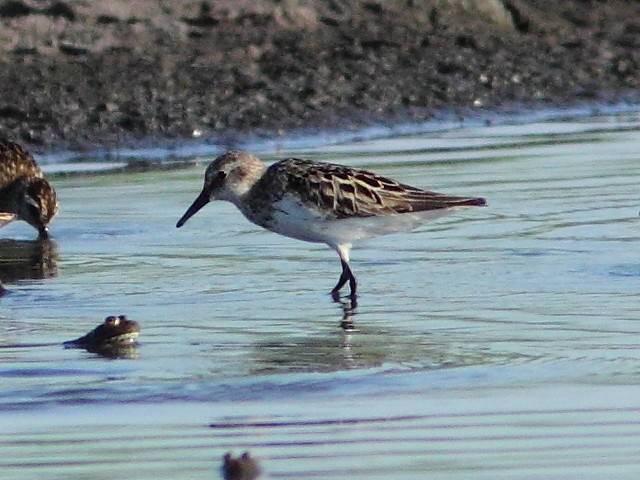
The white breast of this Spotted Sandpiper extends upward in front of the wings. Barring on the wing coverts suggests that is a young bird. It briefly chased after a frog, but did not catch it. 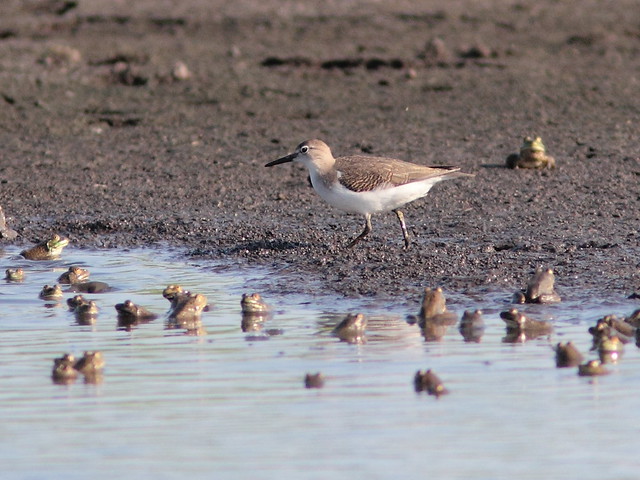
Here is a closer view of the Spotted Sandpiper, with a small prey item in its beak.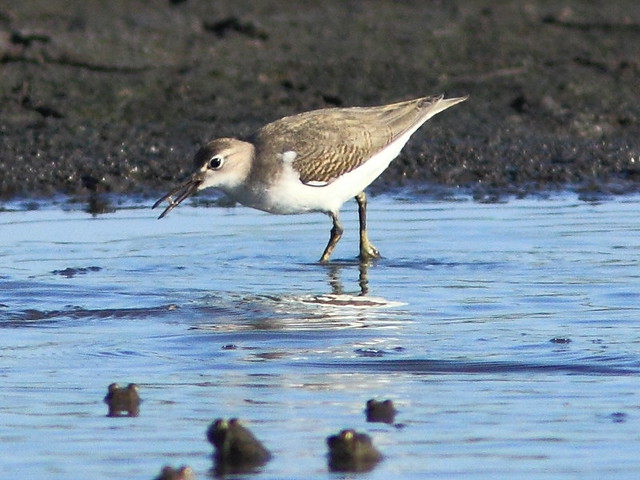
A Killdeer flew in and foraged in the dry lake bed. Its feathers appear worn, ready for the post-breeding molt.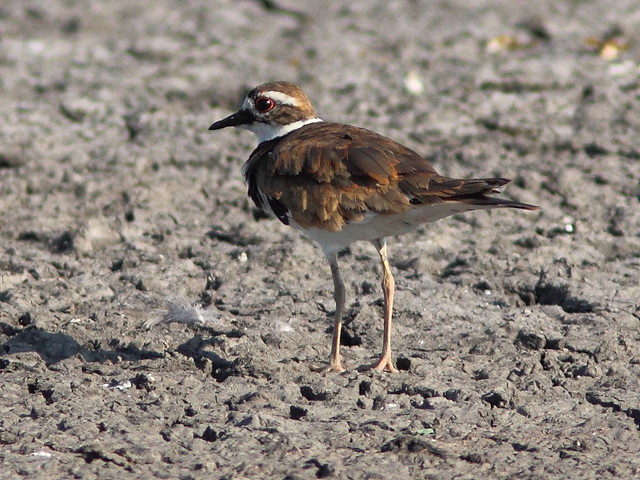
I would have expected many herons to be gathered around to feast on the frogs, but only a lone Green Heron flew up. Its streaked breast indicates it is an immature bird. 
Like the Killdeer, the Dickcissel sings out its name. 